Introduction:
After a series of our educational posts on machine embroidery, one might become a bit overwhelmed with the sheer amount of information on what to take into account for machine embroidery projects to be successful. We talk about differentiation between various threads, needles, stabilizers, fabrics etc. So we thought that it would be helpful for every embroiderer to have a so-to-say written table showing how exactly all the components fulfill their part in the creation of good quality machine embroidery. And thus the today’s post was born. This article systematizes all the previous information on each of the subjects according to general criteria of good quality machine embroidery. Also, it describes instances when those criteria weren’t met, explains what might have caused the defects and gives ways of their troubleshooting. Hopefully, this post will make your path as an embroiderer easier. So, if you’re ready, let’s cut to the chase.
What to seek in a good quality machine embroidery
So, let’s make it clear what good quality machine embroidery actually is. To understand it, let’s answer few simple questions:
Have you ever wrecked your favorite blouse with an embroidery pattern that made the fabric around it tear, pucker and wrinkle? Would you put on your children clothes with such stiff embroidery that it leaves marks on their skin? How much time and thread-changes do you usually spend on average embroidery of, say, a napkin? We could continue, but we think that you get the general idea…
All these “nightmares”, which, alas, do happen in practice of every embroidery artist, are examples of bad quality machine embroidery. Mind, we don’t say “bad embroidery design”, or “bad supplies” or other more particular possible suspects. We say “machine embroidery” in a more all-embracing sense of the phrase on purpose. And by giving all those bad examples we wanted to highlight just how inclusive the umbrella “good machine embroidery” is.
So when does machine embroidery get this “good quality” title? Obviously there’re certain criteria according to which the title is given. For purpose of convenience only, we present all the criteria in 3 separate groups. The first one of them addresses the way the final stitched-out result looks. No flaws or imperfections of any kind should be observed here. The second one is about the embroidery process itself. Ideally it shouldn’t cause you or your machine any inadequate troubles. The third one explains what to expect of good quality embroidery in its use, i.e. after the hoop is removed. In other words it should be easy to stitch, lovely to look at and joyous to use. Further we will elaborate on each of the three of the groups (the look, the process and the use) in a more detailed form.
Good quality machine embroidery criteria
Few words before we start: As we said in the beginning, the article systemizes some of the material, while providing new information as well. To save you time, we give the already mentioned info in the form of links, leading to our older post, where you can find the needed details in full. This way your table of good quality criteria will be informative and easy to read. So, let us begin with the first group.
1. How good machine embroidery should look.
General neatness and nice visual esthetics are what rule the ball in this category. In particular this means the following:
– The stitched-out area is covered fully, evenly and neatly.
In machine embroidery of lesser quality parts of the fabric are seen in between of the loose stitching. If this is the case with your project, before putting the blame on the design, check the needle-thread-fabric combination. In particular: if there’s something wrong with the needle (it’s been used quite too much, it’s gotten dull, etc.) there’s a big possibility that it will skip stitches. Another example of bad machine embroidery is when stitches get “drowned” in the high nap of the fabric (e.g. when embroidering towels). To avoid such a mishap, check if your choice of stabilizers was correct. In most cases the write topping with temporary spray adhesives solve this particular problem. Read more on stabilizers here.
– Shapes are filled correctly; filling and outlines are applied correctly without gaps or overlaying; everything (colors, stitches) aligns perfectly. There’s no bobbin thread peaking through the needle-thread stitching.
Your project lacks in this criterion? One of the possible ways of correction the flaw is to check the speed settings in your embroidery machine. Some types of the stitching require a lesser speed rate. One of such examples is the long-stitch technique that imitates hand embroidery used in Pocket Cat Machine Embroidery Design Delicateness and the artisanal feel of such technique are utterly mesmerizing. However, just like its “ancestral” handicraft counterpart, this technique in machine embroidery can be achieved only with low-speed stitching.
High speed in machine embroidery isn’t the only cause of problems with registration. Wrong hooping or wrong tension of needle or/and threads should also be checked in the case. If their settings are too tight, it will cause pulling of the being-embroidered fabric, which in its turn is one of the causes of poor registration.
Pocket Cat Machine Embroidery Design
– Shapes of the shown correctly, with all the proportions being represented accurately (circles are circles, and not ovals, and squares are squares and not rectangles).
Flaws in this area are caused by either wrong stabilization of the material, improper hooping or flaws in the design. When choosing stabilizing for your fabrics do take into account its quality. Woven and non-woven fabrics stretch in different ways. Various pulls and stretches that such fabrics have could turn your circles into ovals if you mess up your stabilizers. As to the hooping, never overstretch the fabric-stabilizer sandwich inside the hoop.
Sometimes stabilizers are not enough to keep the fabric from shifting. If this is the case with your project, use temporary spray adhesives to add extra “grip” without causing the unwanted deformation. Read further on temporary spray adhesives and their role in the correct hooping and embroidery overall here.
We left designs to the end because oftentimes embroidery artists use “ready-made” designs, created by others. And due to many reasons, with lack of knowledge in digitizing being one of them, control over the quality of designs is not in your hands. So, when you’ve got embroidery of inferior quality, start correcting mistakes with the check-up of “tangibles” (threads, stabilizers etc.)
Only after you make sure everything is correct, you can move on to the checkup of the design. To solve this particular problem (flaws in image representation) you may try adding a more solid underlay or adjusting compensation setting. It’s ok if these terms are all Greek to you. “Fixing” designs requires huge digitizing experience; it’s usually really difficult for anyone but experts to do it. That is why we always suggest using only reliable sources for your designs. Designs created by digitizing professionals don’t have such flaws.
Contour Pink Peony Machine Embroidery Design
NOTE: Always use common sense when choosing designs for a particular type of fabric. Perfectly fine designs tend to be deemed corrupt or flawed when used in the wrong projects or without the proper experience. This often goes for designs with denser stitching especially. Denser designs will require different variations of stabilizers, needles and threads in fabrics of different types. Such designs might look great on sturdier fabrics whereas on lighter fabrics they might look cumbersome and bulky.
Though not always a problem dense designs in general need special treatment. To have as issues with them as possible, choose designs only from reliable sources.
– No “nests”, loops, loose thread or thread ends on either part (face or/and back) of the embroidered project.
Flaws in this area are usually cased by wrong setting of thread tension (both bobbin and needle). When adjusting tension setting, take into account types of fabrics, density of the design, threads and type of stitching. Besides all of these obvious factors there’re ones that are less obvious. Think all the way that the thread makes before it gets into the fabric. Anything that may cause even the smallest delay should be accounted for in the tension settings. For example you use a thread net or separate thread stand. If you do, you need to adjust tension settings accordingly. More on tension settings in machine embroidery read here.
Besides tension you’ll also need to check if the upper thread is threaded correctly. Always make sure your equipment is clean from the lint and other buildup that might cause the hold-up in the work of its parts. For example some spray adhesives may gum up machine’s needles. This in turn will make the needle to pull the fabric casing or aggravating the flagging, spreading “nests” all over your project.
– There’s no puckering or tearing of the fabric.
Puckering is almost always caused by the wrong hooping. Tearing of the fabric may be caused by wrong choice of stabilizers or needles. Delicate non-woven fabrics (think leather) require special care in the choice of the needles. Dense designs stitched on leather with the wrong needles will get you the abovementioned defects. To avoid it compensate for the delicateness of leather by using the correct toppings and needles with less pointy ends. More on needles read here.
Elegant ornaments Cross-stitch Machine Embroidery Designs
2. Live after hoop
So, now that we’ve covered the first part, concerning the way good machine embroidery looks, let’s go onto the second part. This part addresses quality of machine embroidery after the hoop’s removed. So let’s call the second part “Live after hoop” and its criteria include the following:
– Good quality machine embroidery should keep its form after the hoop is removed.
Particularly this one is important for FSL designs, 3D appliqués and patches. If you have problems with FSL, first check your threads and stabilizers. Some FSL designs have specifically given instructions on which threads should you use. If it’s a cotton thread that they are digitized for, don’t switch the preference, otherwise the lace pattern might just not hold together. With stabilizers, you know the drill, always use the correct combination.
– Good quality machine embroidery should cause no inconvenience in their use. It should neither be stiff (think cumbersome patterns on kids’ apparel) or be so loose and feeble that after few washes threads come apart.
Let’s talk about the bullet-proof embroidery first. The “wooden” feel is oftentimes causes by flaws in the program when excessive layering of stitches is used. This sometimes happens in designs of larger sizes with complex color-palette. The issue in most cases is the imperfect digitizing. The thing is quite difficult to translate complex colors into a machine embroidery design without making it too heavy or dense. Another reason for the too thick embroidery is the too jammed (dense) use of short stitches. Such flaws occur mostly with lettering of small sizes. Again – issue of incorrect digitizing. That is why we suggest you check the source of designs that you’re using (downloading, buying etc).
NOTE:Experience of an embroiderer plays an enormous part in achieving good quality in machine embroidery. More often than not problems with digitizing are confused with something else and perfectly designed pattern becomes labeled as “problematic”. One of the most frequent mistakes is when designs are used incorrectly. E.g.: not all designs that look good on throw pillows will do for embellishing of napkins. That is why one should be mindful, when choosing a design for particular project.
Quilt Block Machine Embroidery Design Peacock Color – 7 sizes
Now let’s address cases which do not withstand the tall of washes through time. If your design fell apart after few washes, chances are you used wrong stabilizers.
3. The third group of criteria of good quality machine embroidery sets standards for the process of embroidery itself.
Here we will address the time, effort and costs, spent on creation of a good quality embroidery project. General rule of thumb here is that everything should be kept under an adequate minimum.
– Embroidery of good quality should require an adequate to its palette number of thread changes.
– There should be no unnecessary jump-stitches.
– There should be no excessive hand trimming of loose threads, caused by redundant jump-stitches.
Problems, flaws and defects, related to these criteria, are almost always caused by imperfections in the program of the design. Usually patterns that you get with your embroidery machine will never cause you such problems. Designs from some independent merchants, on the other hand, can. To avoid them try to use designs, created by professionals. Professionals know how create designs, which translate colors and shapes of the image from the screen of your computer (embroidery machine) to the fabric in the most optimal way.
Machine Embroidery Design Rose
With all that being said, let’s not just blame everything on designs. Flaws in the program of the design can very often be confused with the flaws caused by other “villains”. Let’s discuss one of the most frequent cases of the “wrong accusation” -constant breakage of threads. Yes, this could be caused by bad digitizing, especially when density and layering of stitches are not balanced. There’re, however, other possible reasons for the defect. First of them is the wrong setting of tension of both threads. We’ve spoken about the tension earlier, with examples and links for the reference. So scroll up to first group of the criteria, the part about “nests”.
With all that being said, let’s not just blame everything on designs. Flaws in the program of the design can very often be confused with the flaws caused by other “villains”.
Let’s discuss one of the most frequent cases of the “wrong accusation” – constant breakage of threads. Yes, this could be caused by bad digitizing, especially when density and layering of stitches are not balanced. There’re, however, other possible reasons for the defect. First of them is the wrong setting of tension of both threads. We’ve spoken about the tension earlier, with examples and links for the reference. So scroll up to first group of the criteria, the part about “nests”.
Second reason could be about the wrong choice of needles. It’s not right to use same needle for cotton threads, metallics and wool. Each of the threads requires its own size and type of needles. Wrong needle might break not only the thread, but the fabric too even if the stitching is not dense.
Machine Embroidery Design Colorful floral pattern with dog rose, poppy, chamomile and cornflowers
Now let’s talk about the threads.As you choose design taking into account the type of fabric (or cut of the clothing if you work with garments), so you need to do with the threads. Some designs just can’t be embroidered with threads, which they are not digitized for. For instance metallics should not be used in designs with several layers of stitching (with solid underlay, filling and run stitching on top). Friction in such cases will surely cause frequent breakage of metallic threads. With more “voluminous” wool threads there are other rules. They need special needles, lesser density, lower speed of embroidery, longer stitches and so on. Choose the wrong thread and even a perfectly good design will not give you the result that you hope for. You can read more on how to work with different threads here.
Now about the costs…As delicate as the theme might be, we still need to cross all the Ts. With all the homespun solutions and substitutions to “expensive” stabilizers, threads and other expendables of machine embroidery, they still cannot always guarantee good quality results. The reason is simple: good quality machine embroidery comes only from good quality components. Cheep threads will break easier; paper stabilizers will dull your needles; old needles will break the fabric etc. One good result that will cause problems in the long run (think build-up in the equipment from bad quality spray adhesives) is a doubtful victory. That is why be mindful in your saving ways.
Set of Machine Embroidery Designs With Roses and Butterflies – 3 in 1
Conclusion:
Now, that was a long post, right? But hopefully helpful too… As now you have a kind of guideline with rules to follow, tips and heads-up to avoid possible pitfalls in machine embroidery, we hope it’ll be easier for you to actually get good quality results. Striving for good quality doesn’t mean that you should be afraid of mistakes. Mistakes happen and when they do they help you build knowledge and solid experience in machine embroidery. And this duo is what really makes a good embroiderer and thus good machine embroidery results.
You may also like
Machine Embroidery Design Autumn

Author: Ludmila Konovalova
My name is Ludmila Konovalova, and I lead Royal Present Embroidery. Embroidery for me is more than a profession; it is a legacy of my Ukrainian and Bulgarian heritage, where every woman in my family was a virtuoso in cross-stitch and smooth stitching. This art, passed down through generations, is part of my soul and a symbol of national pride.
Date: 25.02.2018
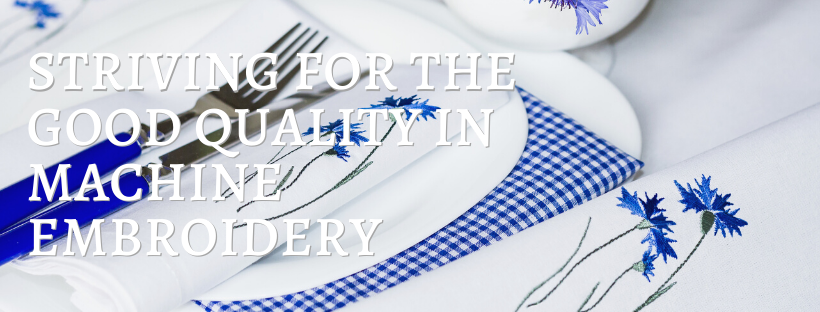
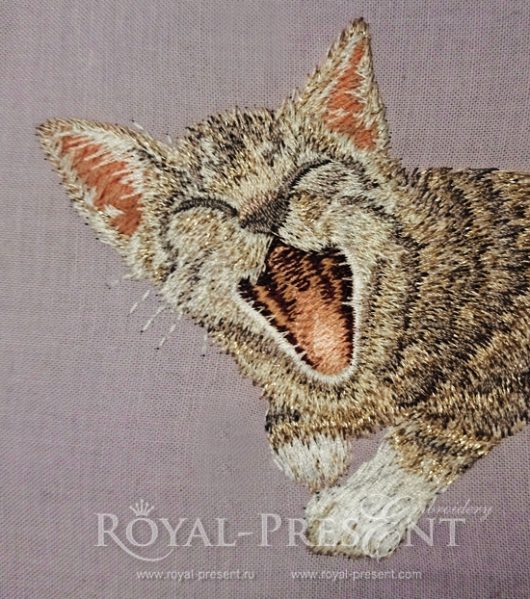

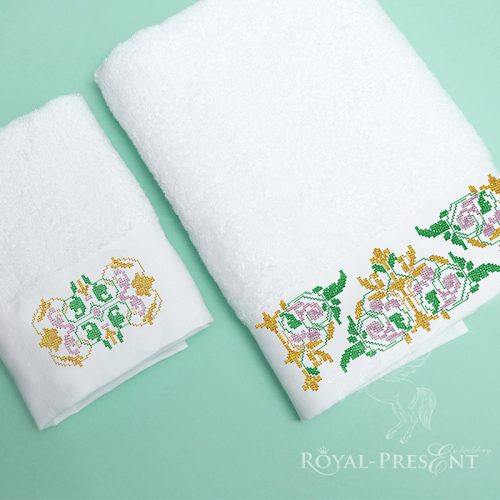
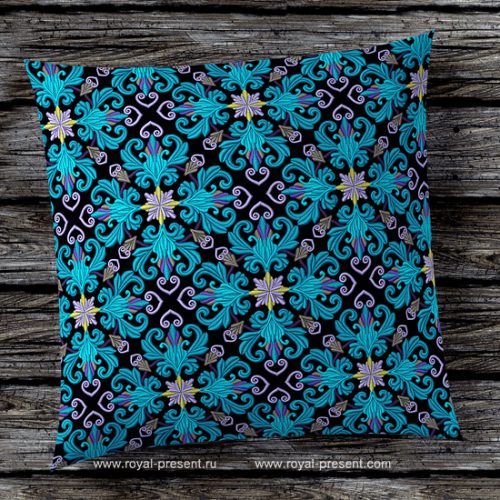


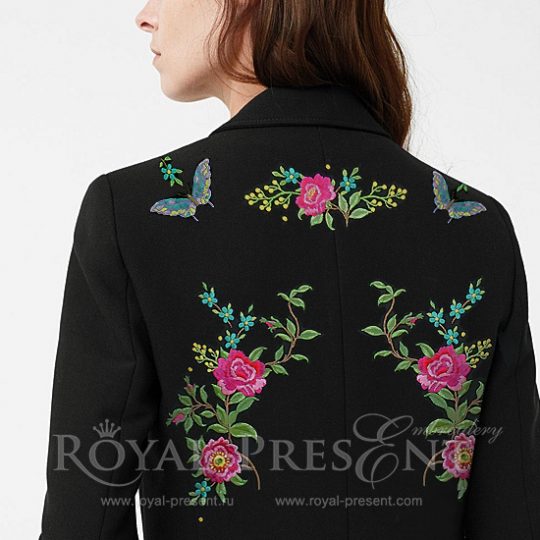
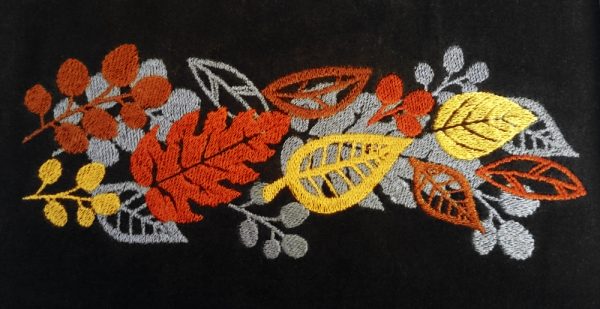

 Get Sign-In Link
Get Sign-In Link Login with Google
Login with Google Login with Facebook
Login with Facebook Login with Amazon
Login with Amazon Login with Paypal
Login with Paypal